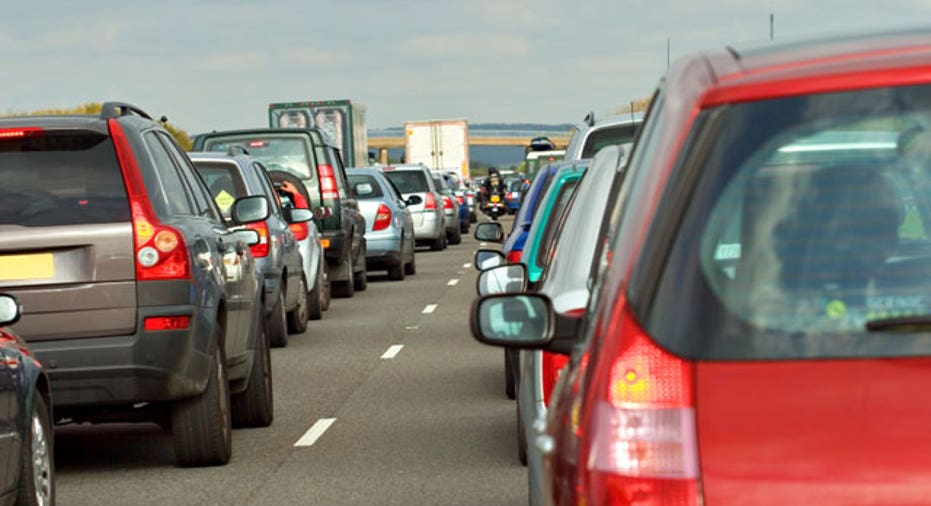It Wasn't me, it Was my Car!

The first "driverless cars" now are hitting the highways, aiming to reduce accidents and make traveling safer. Fewer accidents should lead to lower car insurance rates. But who will be "at fault" if an automated car causes a crash?
The insurance industry is only starting to consider these issues. Nevada recently approved the first U.S. license for a driverless car, and a similar process is under way in California. Also known as autonomous vehicles or "robot cars," the prototypes from Google feature self-driving technology that includes radar sensors that detect traffic. The prototypes also are equipped with video cameras, laser range finders and global positioning systems (GPS).
The widespread use of driverless cars is "a long way off," says Russ Rader, spokesperson for the Insurance Institute for Highway Safety. "But there are systems on vehicles right now that are the building blocks for autonomous vehicles."
Technology such as forward collision warning with automatic braking and electronic stability control already are making roads safer, he adds. Within a few years, there will be a semiautonomous vehicle available that can "drive itself in certain situations," such as in stop-and-go commuter traffic.
Rader says most accidents are caused by driver error. With fully autonomous vehicles, "the potential safety benefits are large, but the jury is still out on whether these systems will actually reduce crashes in the real world."
Fewer accidents mean lower premiums
Fewer accidents should mean fewer insurance claims, and thus lower premiums. Donald Light, a senior analyst for the financial services consulting company Celent, expects that improving technology could lead to a significant decrease in car insurance premiums. Light's recent study looked at several trends, including automated traffic law enforcement, collision avoidance, improved data gathering and, eventually, robot cars.
Under his scenario, technology that "radically reduces the frequency and severity of motor vehicle accidents" would mean the "need for automobile insurance is substantially reduced." The study projects total premiums dropping by 9% from 2013 to 2017 and by 26% from 2018 to 2022 as a result of new technologies.
Whether your car is controlled by a computer or by you, you'll still need liability insurance to protect you in the case of an accident, says Jim Whittle, assistant general counsel and chief claims counsel for the American Insurance Association (AIA).
Some observers have expressed concern that "robot car" technology is rolling ahead faster than state laws can keep up. Whittle says sometimes "the law does evolve to account for new technologies, or the law applies long-established legal concepts to new technologies." Concepts such as product liability and negligence already exist, but to his knowledge they have not yet been applied to cases involving autonomous cars.
Light also says he is not aware of any case law yet concerning driverless cars. "It's still early for insurance companies" to know how they will handle automated vehicles, he says. There are a number of potential liability areas, such as how the hardware and software involved interacts with the car; whether the manufacturer is at fault; the role of other cars or pedestrians; and failure of the owner to perform proper maintenance on the vehicle and its automated systems.
When is a robot at fault?
Would it be more difficult to determine fault in a car accident without a human driver? Whittle, a former defense attorney, notes that each case depends on its own particular set of facts.
"In a situation like that, it is possible the owner could be considered at fault. Perhaps he was allowing the car to drive itself under conditions that the manufacturer would say were not appropriate for self-driving," he says.
Both parties could share responsibility. Or, there could be allegations that the computer malfunctioned or that the software was programmed negligently.
And what if two driverless cars collided? Whittle says it "would be interesting to see how that plays out. How long will it be until someone says, 'It wasn't me; I wasn't driving'?"
Whittle expects that a driver's risk characteristics will continue to be important for insurers in setting rates, even for cars that might normally operate without human intervention. It is likely that, for at least the near-term, these vehicles will offer an option allowing you to take control of the vehicle by overriding the driverless features.
Your marital status, age, driving record and other personal factors still will matter when it comes to setting your premiums. And a person with a bad driving record isn't likely to get a second chance at affordable car insurance just because he or she buys a driverless car.
If driverless cars have an option for manual operation, "the insurer might have to assume that it is being manually operated all the time," Whittle notes. "Otherwise, they may be missing important risk characteristics to be sure they are setting a proper rate for coverage."
Proponents of driverless autos held a meeting June 12-13 in Detroit. The Driverless Car Summit 2012 considered ways to improve existing technology. Not everyone is pushing for the use of driverless cars, however. In California, the nonprofit Consumer Watchdog organization recently urged state lawmakers to bar Google's driverless cars from state highways until there is a ban on collecting movement data on drivers of such vehicles. The group says such information gathering would violate drivers' rights to privacy.
Overall, Whittle says AIA considers autonomous vehicles "a fascinating development" with the potential for improving road safety. However, "it doesn't mean people won't be hurt in an accident. Unless this develops into a perfect state, you still have the potential for being seriously harmed in one of the most dangerous things we do on a regular basis."
The original article can be found at Insure.com:It wasn't me, it was my car!